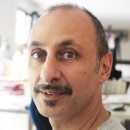Two sisters take the same DNA test. The results show that one sister is 10% French, the other 0%. Both sisters share the same two parents, and therefore the same set of ancestors. So how can one be 10% more French than the other?
The ichthyologist and biologist Prosanta Chakrabarty starts with this apparent paradox to explain several of the complex mechanisms of genetics in the simplest way possible.
DNA tests work really well to find out who a person’s parents are, but can give less reliable responses in other cases. To understand why, we have to know where our DNA comes from in the first place.
Each person’s DNA is made up of approximately 6 billion base pairs, stored in 23 pairs of chromosomes (46 in total). This may seem like a huge amount of information, but 99% of our genome is shared among all human beings. Only the remaining 1% contains everything that is specific about an individual’s ancestry. And in turn, DNA tests use less than 1% of that 1%.
It then has to be kept in mind that the DNA of a parent and child can never be identical, due to the recombination process, which occurs in the germ cells of the parent during the division that generates eggs and sperm. This reshuffling occurs in order to enable the genes inherited from the previous generation to be re-arranged, so that a new combination of them can be sent to the offspring.
More specifically, the chromosomes of the two sisters differ not only from their parents, but also from each other. Therefore, one sister is not more French than the other, in the sense that she has more ancestors from France. Her French ancestors are simply more represented in her DNA.
But it doesn’t stop there:
Tests don’t trace the DNA of the sisters’ actual French ancestors – we don’t have access to the genomes of deceased individuals from previous generations. Instead, these results are based on a comparison to the DNA of people living in France today. The tests look for genetic markers, or combinations of genetic markers. These markers are short sequences that appear in specific places. The sister deemed “more French” shares genetic markers with people currently living in France. The assumption is that these shared markers indicate ancestors from the same place: France.
This result is based on people who have had their genomes sequenced. It has to be noted that 80-90% of them are of European descent: the DNA test does not reveal the heritage from people not represented in the database and, as more people are gradually getting sequenced, the results could change.
These are the reasons why it is not recommended to use a DNA test to define a person’s ethnicity: the way we inherit our DNA and the information available to date make it even more difficult to establish a result with absolute certainty.
